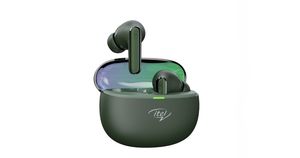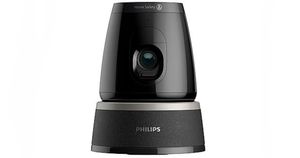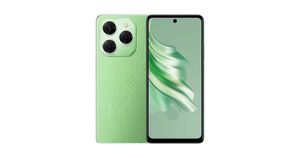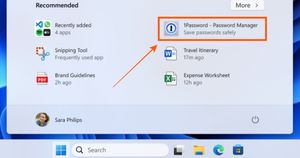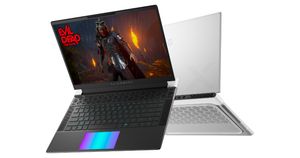The Google Pixel 3 XL has got to be some of the most leaked smartphones in the world, and that too by a fair margin. After a barrage of leaks, not much was left to be unveiled by Google in terms of hardware. Everyone despised the Pixel 3 XL’s hideous screen notch. However, if you’ve noticed over the past couple of years, Google’s Pixel lineup of devices was never about state-of-the-art design or some ground-breaking technology. The internet search giant’s phones were always about how effortlessly they worked.
Google Pixel 3 XL
What Is Good?
- Much improved screen, HDR10 capabilities.
- Clearer and louder speakers.
- Very good camera quality in daylight conditions, especially the front-facing ones.
- Fast performance.
- Fluid UI and thoughtful software.
- Good battery life, fast wireless charging.
- iPhone’s Taptic Engine-like haptic feedback system
What Is Bad?
- Ugly, ugly screen notch and an average design.
- Below par low-light image and video quality.
- Camera’s Portrait Mode is needlessly hard to use.
- No 4K 60fps video recording.
- No 3.5mm headphone jack.
- No microSD card slot.
We got our hands on the pre-production unit of the Google Pixel 3 XL and used it for a few weeks. Google, for better or worse, has finally embraced the notched screen trend with its newest smartphone. It has a 6.3-inch OLED screen with a notch, a Snapdragon 845 processor, 4GB RAM, 64GB and 128GB storage variants, a 12MP camera at the rear, and two 8MP cameras at the front. The design has been slightly tweaked and newer materials at the back allow Google in equipping the Pixel 3 XL with fast wireless charging. The phone is IP67 certified and there are front-facing stereo speakers, similar to the Pixel 2 lineup. There’s still no 3.5mm headphone jack, though.
On paper, the phone hardly seems promising but can Google bring out something extraordinary from ordinary hardware (by 2018 standards)? Let’s find out in our review of the Pixel 3 XL.
About This Google Pixel 3 XL Review
I, Asif Iqbal Shaik, used the Google Pixel 3 XL for close to three weeks for this review. This is a pre-production unit, and it was loaned to us by one of our acquaintances. I used the phone as my primary device and with the Reliance Jio SIM card. I had two email accounts set up on the Pixel 3 XL along with a bunch of social media and IM apps that I use regularly. I left the Ambient Display Mode as well as Live Wallpapers enabled. We will update this review after we finish testing the final retail unit of the smartphone in a few weeks from now.
[P_REVIEW post_id=119836 visual=’full’]
Google Pixel 3 XL Build Quality & Design
If you show the Pixel 3 XL to your friend or any other person, there’s a good chance that they won’t think of it as a premium priced smartphone. The design of the phone is very uninspiring. We reviewed the white variant of the phone. The front of the device is mostly covered by the notched screen. However, there’s still a sizeable chin at the bottom, which houses one of the front-facing stereo loudspeakers. The power button (mint-colored on the white variant of the phone) and volume buttons are on the right. The nano-SIM card slot and the USB Type-C port are at the bottom. The primary microphone is inside the bottom speaker grille, while the secondary microphone is at the top. At the phone’s rear, there’s a camera, LED flash, and a fingerprint reader. The rear is covered with glass, but the top part is glossy, while the remaining part is covered with some sort of frosted glass, helping in wireless charging. The phone’s frame could be metal covered with plastic paint.
The phone felt slippery (but not as slippery as the Nexus 4 and the OnePlus 6) and too big for my hands. It’s impossible to reach the top corner of the screen without adjusting your palm grip. Overall, I think that Google has settled for a very lackluster design in terms of looks.
Google Pixel 3 XL Screen
The 6.3-inch QHD+ screen has curved corners and a huge notch at the top middle section to accommodate for two camera sensors, earpiece, and light+proximity sensor. The screen appears brighter than the P-OLED panel that was used last year in the Pixel 2 XL. I am not sure if Google is using LG’s P-OLED panel or Samsung’s Super AMOLED panel. However, I could definitely notice that it looks much better now. There’s no color blotching. Sunlight legibility is better, too, but still not as good as screens on recent Apple and Samsung flagship phones. Colors, font size, and display size can be customized from the settings menu. Moreover, it looks like the Pixel 3 XL supports HDR10 content playback. However, since the unit we had used was rooted, we couldn’t check HDR video streaming through Netflix. We will update our review once we test the retail unit of the Pixel 3 XL.
Google Pixel 3 XL Camera Quality
The Pixel 3 XL still features just one camera at the rear. It has a resolution of 12 megapixels, and it features phase-detection autofocus as well as OIS. It can record 4K videos. If you were holding your breath for 4K 60fps video recording capability on the Pixel 3 XL, you’re in for a huge disappointment. It still maxes out at 4K 30fps. Google had asserted last year that it doesn’t need more than one camera to capture images with DSLR-like background blur effect (also known as bokeh), so why would the company need two cameras at the front? Well, the Pixel 3 XL has two 8MP sensors at the front. One sensor has autofocus and f/1.8 aperture. The other sensor features a wide-angle lens, f/2.2 aperture, and fixed focus. Video recording maxes out at 1080p.
We know that the non-retail unit of the Pixel 3 wasn’t running the final software. However, we still wanted to see if Google has improved upon the most important thing in Pixel phones: the camera. Well, images shot in daylight conditions turned out great. Accurate colors, wide dynamic range, and lots of details. However, as the light starts to fall, noise starts creeping in. The Pixel 2 wasn’t great in low-light either, and the Pixel 3 hasn’t improved on it. Compared to the Galaxy Note 9 and the iPhone XS, we could notice the relatively higher noise. iPhone XS’ photos have much lower noise, slightly muted colors and a warmer tone to them even though the phone generally chose higher ISO. Light sources are blown out most of the times, and there is a lot of lens flare.
Maybe it’s due to beta firmware, and we want to give Google a benefit out doubt here. I had really hoped that Pixel 3 XL will improve in two things that the Pixel 2 faltered: low-light photos and videos. However, I did not notice any significant improvement. 4K videos recorded during low-light conditions using the Pixel 3 XL have extremely high noise and inaccurate colors. Panorama images have a lowly resolution of just 16MP. Competing phones capture panorama images with an extremely high resolution of 60MP or above. Selfies, on the other hand, are praiseworthy. I think that the Pixel 3 XL has the best selfie camera on any smartphone I’ve ever tested. They have lots of details (and some people may not like it), accurate colors and low noise. The dual-camera setup can capture both normal and portrait image at the same time.
Google Pixel 3 XL Software
There’s not much of a difference in the software. The Pixel 3 XL runs Android 9 Pie, albeit with some additional features exclusive to the Pixel lineup. The phone can identify music playing in the room and there’s Pixel launcher as well as ‘Living Universe’ live wallpapers. Almost all the Living Universe wallpapers are new and very nice looking. Some of them react to motion while the others react to the time of the day. Based on the wallpaper, the theme of the software changes between light and dark. Even the news feed on the left most home screen turns dark.
The Digital Wellbeing feature tries to limit your screen usage (as per the limits set by you), but you can ignore it if you want. The new Ambient Display mode shows a part (outlines of things such as planets, roads, and other things) of the Living Universe wallpaper. The sides of the phone are squeezable, allowing you to summon the Google Assistant. The squeeze action can also be used to silence alarms, timers, notifications, and incoming calls. You can adjust the squeeze sensitivity as well.
Google Pixel 3 XL Performance
The Qualcomm Snapdragon 845 the brain inside the Pixel 3 XL, and it is paired with 4GB of LP-DDR4X RAM and 64GB of UFS storage. Just 4GB of RAM might not seem enough on paper, but the Pixel 3 XL runs just fine and I didn’t find any multitasking issues on the phone due to just 4GB of RAM. The phone felt faster, though, compared to the Pixel 2 XL, thanks to the faster, Snapdragon 845 processor. Everything was fast and smooth, be it web browsing, gaming or using multiple apps at once. The phone restarted a few times every day, owing to its non-final software. One surprising feature on the Pixel 3 XL is its newer haptic feedback system: it’s similar to the Taptic Engine found on newer iPhones. On-screen clicks (such as on navigation buttons, swiping down the notification bar and typing) and ringtone vibrations now feel distinct and profound.
The front-facing stereo loudspeakers are both clearer, louder, and wider than the ones which were used in the Pixel 2 XL. There’s no 3.5mm headphone jack, though, and the bundled USB-C earphones don’t help either. They’re too basic for a phone as costly as the Pixel 3 XL, but that’s true for the ones that come bundled with the new iPhones as well. There’s a USB-C to 3.5mm headphone jack adapter bundled with the phone which you can use with your good old wired earphones. If you’re someone who has shifted or want to shift to wireless earphones, be rest assured. The Pixel 3 XL has all the high-quality wireless codecs: AAC, aptX, aptX HD, and LDAC.
Google Pixel 3 XL Battery Life
The 3430mAh battery that powers the Pixel 3 XL is capable of rapid charging through USB-PD chargers as well as fast wireless chargers. The Pixel 3 XL charged as fast as the Pixel 2 XL, and it last similarly long. I was able to get through a day with more than five hours of screen-on time. I charged the phone wirelessly using Samsung’s Fast Wireless Charger, and it worked flawlessly. We will also update this section once we end up testing the retail unit of the phone.
Should You Buy The Google Pixel 3 XL?
The Pixel and the Pixel 2 had exposed Google’s inexperience in making quality smartphone hardware. This year, the search giant has improved upon a lot of problems which were seen in its previous-generation smartphones. The Pixel 3 XL offers improved audio-visual capabilities, complete with HDR10 capable OLED screen and louder stereo speakers. Its predecessor already had great cameras, and the Pixel 3 XL improves upon them even further, offering true-to-life colors and extremely wide dynamic range. The new, dual-front-facing camera setup also captures extremely detailed selfies. Battery life is more or less similar to the Pixel 2 XL, though, but the improvement here is the inclusion of faster wireless charging.
There’s no doubt that the Pixel 3 XL is a good phone, but it is far from perfect. Unlike most other competing brands, who are finding ways to completely remove bezels or at least reduce the size of the screen notch, Google has implemented the most hideous notch I’ve ever seen. And we don’t see a feature that’s so damn impressive that it can justify the presence of that ugly, ugly notch. There’s still no microSD card slot, no dedicated headphone jack, and no 4K 60fps video recording, either. There are smartphones in the market such as the Galaxy Note 9 that offer all these features on top of better screens, louder speakers, and advanced biometric authentication systems.
The only unique thing that’s going for the Pixel 3 XL is Google’s faster software update and security patch delivery. If you were happy with the Pixel 2 XL and are okay with lackluster design and the screen notch, by all means, go ahead and buy the Pixel 3 XL. You’ll be happy with it. If not, there are better phones out there.











































